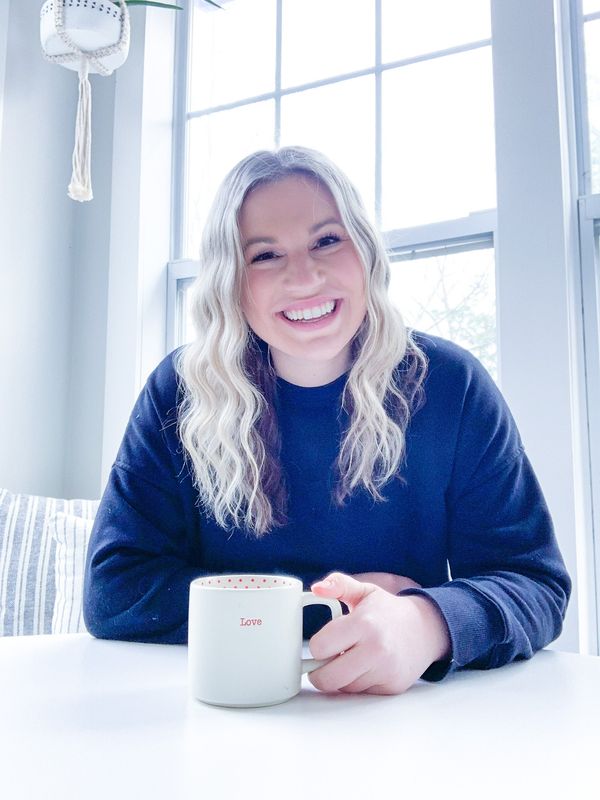Kelly Tuten, Curriculum and Instruction Coordinator for Virginia Academy, joined our podcast, The Teachers’ Lounge, to present a webinar about how to build a classroom community that lasts. Kelly has 11 years of classroom experience and is now applying her Master’s in Curriculum and Instruction to her Instructional Leadership role at Virginia Academy. Her dream is to coach others in adapting and aligning Christian curriculum frameworks within the relevant pedagogy in the current educational landscape. This is a shortened version of the podcast; you can listen to the whole webinar here.
Classroom leadership is not the same thing, in case you were wondering, as classroom management. And that’s where we’re going to start. So first and foremost, a big key item takeaway is, why do I care about classroom leadership? I think we all are in the business of wanting to create an irresistible classroom culture. If we can get students in our room and excited to be there, then that’s half the battle. So first and foremost it’s going to start with you. You’re going to own your classroom. You’re not a manager. I don’t want you to think of yourself that way. You are a leader, right? If you’re a teacher in your room, you lead that room.
Students get their cues from you and you set the atmosphere, right? You are not a thermometer. You don’t tell the temperature. You are a thermostat, right? So you set that temperature. What is the difference between leadership and management? I think leadership gets in front of the problem and management might not.
We are going to reflect in our classroom culture what we allow. If we’re the owner, what we allow really matters. So what I’m not saying is that we do not adhere to the policy that our administration has set before us, right? We can’t be leaders in our classroom first without totally submitting to and accepting what our administration has deemed okay, so we can’t rewrite any rules.
Managers ask what and when. Leaders ask how and why. So managers are going to say, What do you need me to teach? And when am I teaching it? You just tell me what to do. Leaders, though, are going a step further and asking, Okay, how am I going to get to this content?And why am I teaching this content? If we can answer that for ourselves, then absolutely our students will be engaged. Managers assign work, leaders influence buy-in. So if I’m assigning work, obviously, I’m a great teacher who wants to assess my students on what they know and how they know it.
But if I’m influencing buy-in, I’m taking it a step further. If I’ve answered why, then I can be in the position of influencing students to buy into what we’re doing and why we’re doing it. I’m not just organized, I’m inventing, I’m inspiring trust. If I’m inspiring trust, I’m not trying to control my students’ behaviors.
Classroom management: okay, you should have control of your classroom. But inside of that control, sometimes we can’t keep to the main thing, and relationally for our students, if we’re inspiring trust, then we are entrusting our students with what they need to do instead of taking away all of their autonomy.
If you’ve ever met a student, you know that sometimes they don’t want to be in your class. But a classroom leader takes people not just where they want to go, but where they ought to be. So, you can pull out things in your students that you notice and you can give them the helpful tools and steps to get to where maybe they can’t even see that they need to be.
So while we own our classroom, we lead in that capacity. Also, we can self-check. Am I a teacher or am I a teller? Am I telling my class the rules and expectations or am I teaching them? Am I telling my class my content or am I teaching it? There is a difference.
Do I expect and inspect? Students don’t always do what we expect. They do, however, do what we inspect by holding them accountable. How am I holding my students accountable? Do I follow through? Am I consistent? I’m leading my classroom if I’m following through on what I say.
If I’m going to be prepared for class, I’ve answered all of those questions and then I’ve used the Holy Spirit. Let’s just use His guidance, first and foremost. And then also let’s use our resources. What resources do we have for collaboration and preparation?
And then plan to plan. What is my weekly schedule? When are my planning blocks? That really helps us to define how I can lead because when I’m stepping into the classroom and I am leading and I am teaching, if I’m not prepared I’ve lost a lot of that. But if I am creating space to plan and if I have a weekly schedule, then you are really paying it forward because I believe that instruction is really only 10 percent of what we need to lead. 50 percent is preparedness, and then 40 percent is knowledge.
What really happens when we prepare for those instruction times is that now we not only have what we need to do in class, but now what else can we do? Let’s back up. Now we can do all the things a leader does in their classroom. Now we can influence buy-in. Now we can take time to build relationships.
I will say that preparation and planning are two different things. So if I’m prepared, I’m going to make it ready. I might make the room ready. I might set the desks up the way I need them to be set up. I might make my copies. I might set up my Promethean board. That’s what I’m doing. But if I’m planning, I’m creating intention and decisions for what students are going to achieve or do.
I can be prepared all day for students to come into my room, but if I don’t have a plan, and if I don’t lead, I can go back to being a manager. And I don’t think that planning creates more work for educators. I just think that it creates a different way to go about the day-to-day of the educator’s life.
We’re entrusted with an average of 3, 000 students in our lifetime. And I think we’re doing them a disservice if we are not thinking of ourselves as leading our classrooms first by establishing trust and inspiring relationships, by influencing their buy-in, and by being in the driver’s seat of the curriculum.
So, to build that trust with students it’s really going to take some time and effort. Some cool, really educational buzzwords right now that I’m loving to see are relational action plan, a treatment agreement, a relationship contract, or a class promise.
Those are really great tools that teachers can use to lead in their classroom to not just manage behavior, but inspire relationships. If we are inspiring trust, we not only have relational capital and respect, but we can identify and understand what a student needs and how they need it. And that’s really important.
We know what kills our classroom culture. Sarcasm. Yikes! Sarcasm kills it. Criticism– that could kill it. If I’m inconsistent with what I’m doing in discipline for one student versus another. If I just am not instructing, I’m just telling, if I’m not teaching, I’m just telling, or like controlling or something like that. Or if I’m playing favorites. That’s really tough. And lastly, if I am hiding. If I have hidden curriculum, it’s like students know what they’re supposed to do, but not because of what I said, just because of how it goes. And really, I don’t want to focus on how to kill trust, because I think we all would agree that these are not best practices.
But what I will say is that even if that does happen sometimes, because we’re not perfect and we’re human, I think that the time that you put in to relationally understand your students, whether that be in a pre-assessment where you figure out their interests, likes, dislikes, attending their basketball game, or even asking them when their birthday is, right? That time that we put in to relationally invest in our students is time that we’ve gotten back when maybe we don’t hit the mark, because honestly, sometimes we don’t. That’s just what we like to call life, and teachers are humans and that’s okay.
So if I’m going to be a leader in my classroom, I’m not just going to manage it. If I’m going to lead it, then I’m going to allow students to also have relationships with each other. And that’s going to come from a totally different perspective that I have, which is really like identity building and forming.
So let’s go over it, my friends. Let’s review everything we have learned, because it’s been so many good things. Okay, so we are owning our classroom. No one else can lead your classroom better than you can. You’re going to own the atmosphere. You’re going to set it. You’re going to be a thermostat. And you’re going to ask good questions. You’re going to inspire buy in. You’re going to prepare for it. You’re going to be competent in your teaching materials. You’re going to plan it. You’re going to create things. You’re going to write it down. You’re going to think. You’re going to allow your students to think when you think.
You’re going to build it. You’re going to establish trust. You’re going to have your treatment agreement. You’re going to create a classroom culture that is relationally based instead of just contingent on all the rules. And then you’re going to entrust it. You have the power of the Holy Spirit.
And when it fails, you own it. When you need help, you own that. If you have to change it up, you own that too.
Because you can and are able to do it. If you didn’t know, you are a wonderful classroom owner and you are able to do everything you need to do in your classroom. Thank you for all the work that you do for your school and for your students.




